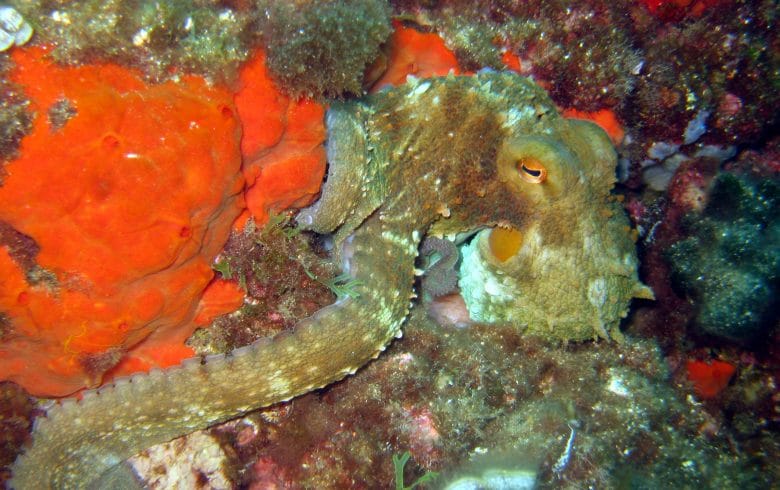
The eight arms of the common octopus have two rows of suckers and can span up to 2 metres. It crawls across the seabed but can also swim in open water. If it senses danger, it will change colour to blend with its surroundings or expel a cloud of black ink and escape. It eats mainly crustaceans and molluscs. The males and females mate in the spring, and the female lays tens of thousands of eggs in clutches attached to the ceilings of rocky crevices. The species is found all over the Mediterranean and the Atlantic down to depths of 150m, on all types of seafloors wherever it can find cavities, such as holes in rocks, shipwrecks, amphora etc.
Phylum: Mollusca
Class: Cephalopoda
Order: Octopoda
Family: Octopodidae
Scientific name: Octopus vulgaris
French: Poulpe, pieuvre
Spanish: Pulpo comun
Italian: Purpo verace
German: Gewohnlicher Krake






















